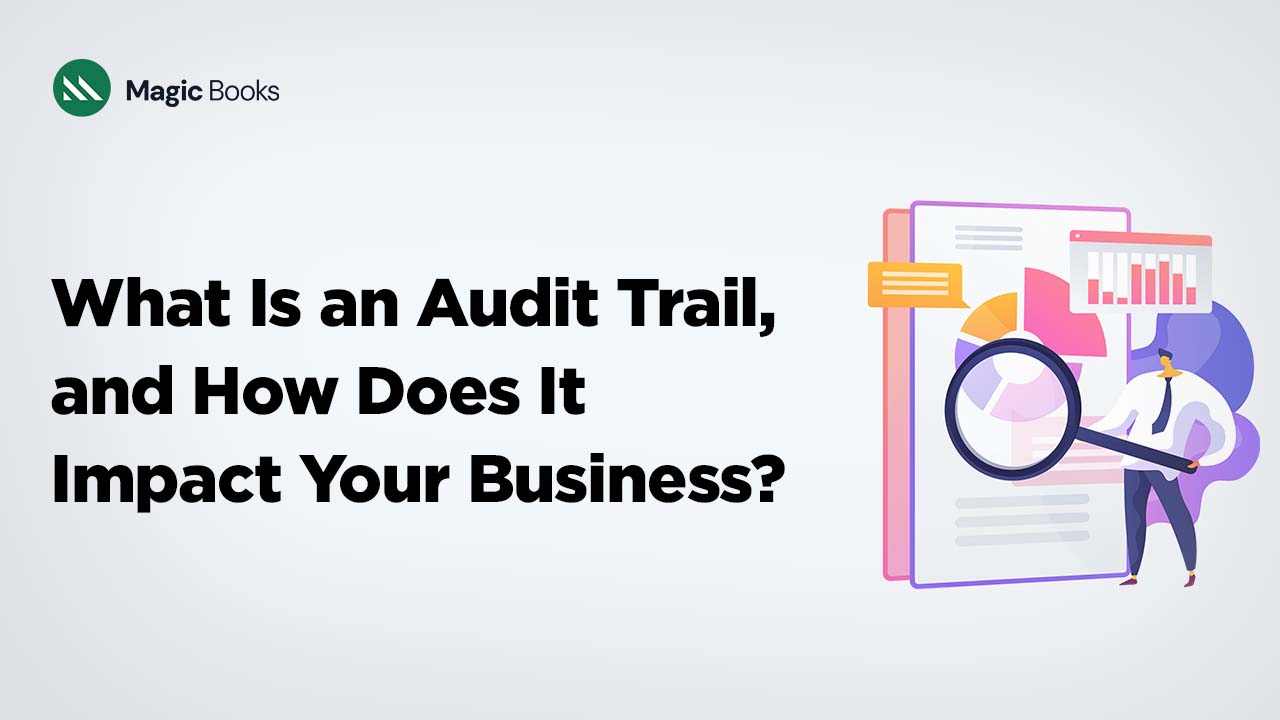Audit trails are chronological, time-stamped records containing every transaction, configuration change, or access event across systems and processes, automated or manual.
The primary benefits are greater compliance with financial (SOX, PCAOB), privacy (HIPAA, GDPR), and climate-reporting regulations; improved risk management through AI anomaly detection; and greater operational resilience through faster incident response.
The leaders of B2B and B2C organizations stand to leverage new audit-trail practices to gain meaningful cost savings through reduced fines and faster forensic incident investigations, while gaining trust from stakeholders and a competitive advantage through data-driven decision-making. This post provides a detailed coverage of definitions, forms, business implications, practices for implementing successfully, challenges to be aware of, real-world examples from 2024-2025, and future developments in GenAI analytics and blockchain, reduced operational resilience through faster incident response.
What is an Audit Trail?
An audit trail is a chronologically ordered log of events and changes that occur in a system, such as timestamps, user IDs, source IP addresses, and change history. It operates like a virtual bookkeeping ledger, with visibility and traceability for all transactions or operational actions, whether of a financial type, security-related, or configuration settings.
System-Generated vs. Manual Audit Logs:
System-Generated Logs: Automatically recorded by infrastructure elements, databases, and applications (database transaction logs, web server logs). They provide consistency and near-real-time recording with less human error.
Manual Logs: Kept by personnel for non-fully automated activity (e.g., physical access logs, manual approvals). While flexible, they need to be controlled by strict process controls to ensure completeness and accuracy.
Types Of Audit Trails
Financial Audit Trails (SOX Compliance):
Firms are required by SOX Section 404 to document internal control over financial reporting and have full audit trails over all access to and changes made to financial data. Audit logs should allow for auditors to track each line item of every financial statement to its source both for external audit and internal audit purposes.
Operational and Security Audit Trails: They are utilized to monitor system performance, configuration modifications, and user activity, while security audit trails monitor authentication activity, privilege escalation, and suspicious activity.
These logs are input to Security Information and Event Management (SIEM) systems for:
- Threat Detection: Real-time analysis of log data for anomalies.
- Incident Response: Rapid root-cause analysis and containment.
- Regulatory Reporting: Evidence for ISO 27001, NIST CSF, and others.
Regulatory Audit Trails:
- HIPAA (Health Insurance Portability and Accountability Act): Covered entities must implement audit controls that track and report access and activity within electronic Protected Health Information (ePHI) systems.
- GDPR (General Data Protection Regulation): Controllers and processors require records of lawful processing, consent capture, and history of data access; audit trails support accountability and notification of breaches.
- California Climate Disclosures (SB 253, SB 261): The compliance requires firms impacted by these disclosures to render greenhouse gas emissions data and risk reports traceable and verifiable through audit-trail-based reporting mechanisms.
Why Audit Trails Matter In 2025:
In 2025, the regulations are more active than ever, with new climate-reporting requirements and increased enforcement of existing financial and privacy compliance driving record levels of compliance complexity. Organizations are faced with a mosaic of requirements—from PCAOB requirements under SOX to SEC’s Consolidated Audit Trail and California climate disclosures—that demand robust, tamper-evident records of every transaction and configuration change.
Concurrently, the improvements in artificial intelligence and machine learning enabled the detection of fraud and system anomalies in real-time, turning audit trails into active risk-management tools from being passive retrospective records.
Lastly, with growing instances of system failure and cyber-threats, complete audit logs are imperative to facilitate prompt incident response and business continuity to allow businesses to reconstruct events, isolate breaches, and meet internal stakeholders and external regulators.
Compliance and Governance:
Regulatory agencies are expanding the scope and complexity of their audit expectations. For example, the Public Company Accounting Oversight Board (PCAOB) has strengthened the AS 1215 documentation requirements to require end-to-end traceability of financial reporting controls, thus making detailed audit logs of access and modifications mandatory. Similarly, the Securities and Exchange Commission (SEC) Rule 613, the Consolidated Audit Trail, mandates that all equities and options trades be captured in a single, tamper-evident log, thus making standardized, high-fidelity data schemas across trading venues more essential.
In green circles, however, California’s SB 253 and SB 261 require corporations to provide traceable, verifiable greenhouse gas emissions data, essentially bringing climate disclosures up to the same level of detail as accounting audits. In answer, therefore, chief leaders must be aware that their audit-trail system can accept, hold, and produce vast quantities of information in legally acceptable formats—or else gaps translate into multi-million-dollar fines and damage to reputation.
Risk Management and Fraud Detection:
Audit trails have emerged as a primary fraud prevention technique using ongoing monitoring and artificial intelligence-driven anomaly detection. By monitoring all transactions and system activities in real time, continuous-monitoring platforms can flag duplicate payments, unauthorized login attempts, or actions that violate deployed policies prior to these issues manifesting as massive financial losses.
A recent survey has discovered that firms employing AI-driven audit logs have cut fraud investigation times by as much as 40% and experienced a 25% reduction in successful insider-threat attacks. Furthermore, the fact that extended logging is in place deters; employees and contractors who know that all their actions are monitored are much less likely to attempt to employ privileged access for malicious intent. This mix of proactive detection and behavioral deterrence makes audit trails valuable assets for risk management and governance.
Operational Resilience and Incident Response:
When incidents occur—whether a cyber-incident, system failure, or data breach—thorough audit trails are the basis for a successful response and recovery. The NIST Special Publication 800-61 guidelines emphasize the importance of traceable logs to facilitate root-cause analysis, validate containment actions, and record post-incident reviews to continuously improve.
Audit trails improve the capability of IT and security staff to replay events in chronological order, determine misconfigurations or intrusion paths, and recover services with minimal downtime, thus protecting business continuity and customer trust.
Furthermore, the majority of regulators increasingly require compulsory incident-reporting within tight deadlines; having pre-validated, tamper-proof logs keeps organizations on schedule with these deadlines without playing catch-up to locate data.
In highly regulated sectors like healthcare and finance, the capacity to deliver a swift, evidence-based response can be the difference between a successful response to an incident or facing severe fines.
Implementation Best Practices:
1. Establish the scope, requirements, and policies:
Start by attributing important systems and data flows to specific compliance, security, and operational goals. Establish distinct procedures and policies—defining who logs what, how long to keep it, and review intervals—to promote consistency and accountability.
2. Choose and Install Proper Tools:
SIEM and Log Management Platforms: Assess solutions (e.g., Splunk, IBM QRadar, Exabeam) for scalability, analytics that are natively included, and integration with existing infrastructure.
Blockchain-Based Ledgers: For third-party-audited or high-value transactions, employ Hyperledger or Ethereum-based platforms to ensure decentralization and immutability.
Cloud-Native Logging Services: Leverage AWS CloudTrail, Azure Monitor, or GCP Audit Logs for elastic, managed ingest and storage with minimal operational burden.
3. Maintaining Log Integrity:
Store logs on write-once, read-many (WORM) storage or immutable object storage; perform cryptographic hashing on each log record to detect tampering; and restrict access through strong role-based access controls (RBAC).
4. Implement Scalable Pipelines and Retention Strategies:
Utilize high-throughput messaging systems (e.g., Kafka) for log aggregation, with filter and sampling policies to drop noise and retain all important events. Coordinate retention policies with legal requirements (e.g., seven years for SOX) and tier logs into hot, warm, and cold storage to conserve costs.
5. Align With GRC and Monitoring Frameworks:
Embed audit-trail information into unified GRC dashboards to facilitate logs to be mapped to controls, risks, and compliance frameworks (e.g., NIST CSF, ISO 27001). Leverage automated alert and reporting mechanisms to facilitate audit logs to be fed directly into incident-response and audit processes.
6. Perform Regular Evaluations and Assessments:
Plan periodic log reviews by security, compliance, and operations staff to detect anomalies beforehand. Test backup and recovery procedures to ensure audit-trail availability in the case of emergencies.
Common Challenges & Solutions:
| Challenge | Solution |
| Exponential Log Volumes | Implement content filtering, severity-based sampling, and high-throughput pipelines. |
| Performance Overhead | Offload ingestion to dedicated clusters, batch writes; use asynchronous logging agents. |
| Tamper-Resistance and Integrity | Enforce WORM storage, cryptographic hashing, and periodic integrity checks. |
| Inconsistent Vendor Formats | Normalize logs via parsers and schema-mapping layers, or adopt standardized formats like CEF or JSON. |
| Privacy and Data Protection | Anonymize or redact PII at source; apply RBAC and encryption in transit and at rest. |
| Cost Management | Use tiered storage; automate archiving of stale logs; leverage cloud-native pricing models. |
Exponential Log Volumes: Organizations typically face massive volumes of logs, leading to inefficient usage of storage and sluggish analytics pipelines. Elimination of non-critical events at the source, sampling based on severity, and the development of distributed ingestion pipelines via tools like Kafka or Fluentd can address this problem.
Performance Overhead: Synchronous logging slows the application. Avoid using asynchronous agents, batched writes, and offloading log storage to cloud services or specialized clusters.
Integrity and Tamper Resistance: Logs are vulnerable to being tampered with to hide malicious behavior without tamper controls. Demand WORM storage, use per-entry cryptographic hashes, and perform automated integrity checks against a trusted root hash.
Privacy and Compliance: Audit logs usually hold PII or sensitive business information. Apply data masking or anonymization at collection points, have stringent RBAC, and encrypt logs in transit and at rest.
Emerging Trends
GenAI-Powered Analytics
AI/ML systems will, by 2025, scan terabytes of logs to uncover high-risk anomalies, automatically generate incident briefings, and even recommend remediation actions in lay language. Natural-language interfaces will enable executives to ask audit-trail data questions in conversational language—e.g., “Show me all privilege escalations last quarter.”
Blockchain-enabled immutable ledgers.
Distributed ledgers will act as append-only audit repositories, thereby yielding an immutable chain of custody for all events that occur throughout federated environments. Blockchain timestamping will be employed to timestamp AI-model training data sets and smart contracts, thereby embedding “responsible AI” governance directly in the audit trail.
Quantum-Resistant Logging Architectures:
New quantum-resistant cryptographic schemes (e.g., CRYSTALS Kyber/Dilithium) will protect audit-trail integrity from future quantum attacks, as demonstrated in recent research prototypes.
Real-time compliance monitoring:
Streaming analytics engines will apply regulatory rules to real-time log data, alerting for SOX, HIPAA, or climate-disclosure transgressions the instant they happen, instead of waiting for periodic reports.
Observability and Convergence:
Audit trails will integrate with application-performance and infrastructure telemetry, thus forming a single “observability” layer with security, compliance, and DevOps. This integration facilitates immediate root-cause analysis and remediation automation.



